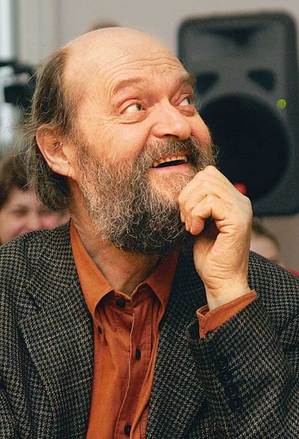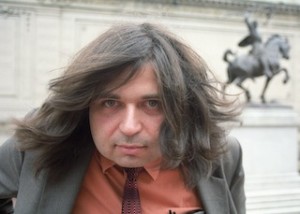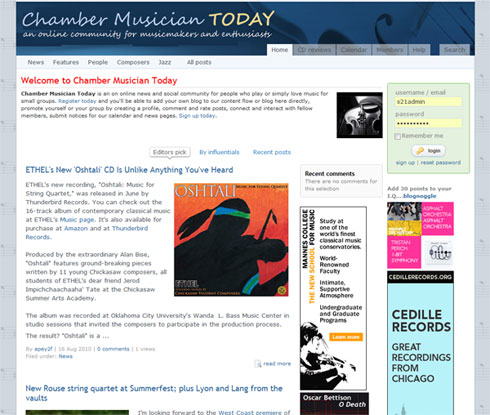The slice of the Proms which I’m getting this summer seems less of full of twentieth and twenty-first century music than usual. Works of Gunther Schuller, Simon Holt, Harrison Birtwistle, Stockhausen, Colin Matthews, Luke Bedford, Brett Dean, Oliver Knussen, (late) Stravinsky, George Benjamin, Stephen Montague, Takamitsu, and Julian Anderson were done before I got here and music by Judith Weir, Bayan Northcott, Brian Ferneyhough, Jonathan Harvey, James MacMillan, Tansy Davies, and Jonathan Dove will be on after I leave. But there’s still plenty happening while I’m around.
On Friday night, August 13, the BBC Philharmonic and Gianandrea Noseda, on a program with otherwise pretty standard pieces (Verdi Forza de Destino overture, Bruch Concerto, Schumann Fourth Symphony), performed Partita by Dallapiccola. Written in 1930 to 1933, before Dallapiccola started writing 12-tone music, it is larger, both in terms of it’s length (twenty seven minutes) and it’s orchestration (triple winds, alto and tenor saxophone, lots of brass, two harps, piano, organ, lots of percussion, and strings) than one usually thinks about Dallapiccola’s works being. There are four movements, the last being a setting with soprano of a Latin poem, ‘The Lullaby of the Blessed Virgin Mary.’ Although the music certainly gets big and loud at places, particularly in the third movement, much of it has the delicacy, mellifluousness, and transparency
that characterize his better known pieces. In fact, it’s elegant and sonorously seductive music, especially the last movement, in which Sarah Tynan was the rapt soloist.
Two days earlier the concert by the Danish National Symphony Orchestra and Thomas Dausgaard began each half with choral pieces by Ligeti, sung by the Danish National Concert Choir and the Danish National Vocal Ensemble. The first featured Night and Morning, early pieces setting epigrammatic poems by the Hungarian poet Sándor Weöres describing, in fact, night and morning. These pieces were among the last that Ligeti wrote before he left Hungary for the west in 1956, which means that stylistically they would have been at least marginally acceptable under the constraints of the communist government of the time. The liveliness and skillfulness of the choral writing demonstrated how completely Ligeti had mastered traditional compositional techniques. Lux Aeterna, possibly Ligeti’s most famous work, which was written in 1966 and balanced those pieces on the second half of the concert, demonstrated the lengths to which his imagination and mastery were able to take those same techniques when he got the chance.
The concert concluded with Music of the Spheres by Rued Langgaard, which can possibly best be described as being the damdest piece. Langgaard is, apparently, one of the most important Danish composers of the first part of the twentieth century. Written in 1918, when Langgaard was 25 years old, it consists of about 35 minutes of texture of various density, register, and orchestration without any traditional elements such as harmony, melody, or bass, in one continuous span comprising many shorter sections. It is, in the words of Malcolm MacDonald in the program note “an apocalyptic religious meditation which simultaneously evokes the vastness of space, the wonder of nature and the destructive power of the sun and all its kindred stars,” scored for a soprano soloist (who is hardly noticed in all the traffic), a larger double chorus, and a large orchestra including a ‘glissando piano’, organ, and much percussion. Music of the Spheres could be considered either as being extraordinarily prescient and visionary in predicting certain musical styles of the future (both Ligeti micropolyphony and certain kinds of minimalsim) or as being extraordinarily incompetent, and is probably some combination of both. Still is had some kind of compelling continuity and certain moments were very striking, most memorably so a stretch for a solo wind and four sets of timpiani, which were eventually going full blast and the two times when an second smaller orchestra, hidden in the gallery of the Albert Hall, started playing very different music (or at least very different notes) (that kind of thing works really well in the Albert Hall). It sure was peculiar, and I’m not sure how “good” I think it is, but I didn’t mind hearing it as it was going on, and I wouldn’t be terribly unhappy at the prospect hearing it again sometime in the future if it were to ever cross my path again, although I don’t think I’d ever seek it (or any of Langgaard’s other music, of which, apparently, there are great quantities). The performers played with absolutely blinding conviction and dedication. It was clear that one was never going to hear a stronger or more eloquent advocacy of the piece.
On the first half of Tuesday evening’s concert by the Deutsches Symphonie-Orchestra Berlin and Ingo Metmacher Nachstück from Der ferne Klang (1903-1910) by Franz Shrecker and the Violin Concerto of 1937 by Korngold (with Leonidas Kavkos as the soloist) were shown to be pieces of enormous refinement, skill, and beauty, made with great mastery; then on the second half the Mahler Seventh Symphony, that wonderful and thrilling piece of chamber music for 150 players, showed itself to be the primary image and the real thing, an exhilarating and overwhelming masterpiece.
All of these performances are available for listening at the BBC iPlayer (http://www.bbc.co.uk/programmes/b007v097/episodes/player) for seven days after the performance. (Since they get rebroadcast, and those are also available for seven days, they’re actually available for a rather longer time.)
 Among the events being commemorated in this year’s Proms season, is the 75th birthday of Arvo Pärt. This celebration kicked off on August 17 with a concert by the BBC Symphony Orchestra, conducted by Edward Gardner, which began with Pärt’s Cantus in memoriam Benjamin Britten, and which followed Britten’s Four Sea Interludes from Peter Grimes. The intention was that the Britten would follow without a break; the program actually said that. But as it turned out, the body language of both the conductor and the orchestra told the audience at the end of the Pärt that something had stopped, and the audience responded with applause, so that particular idea didn’t exactly work.
Among the events being commemorated in this year’s Proms season, is the 75th birthday of Arvo Pärt. This celebration kicked off on August 17 with a concert by the BBC Symphony Orchestra, conducted by Edward Gardner, which began with Pärt’s Cantus in memoriam Benjamin Britten, and which followed Britten’s Four Sea Interludes from Peter Grimes. The intention was that the Britten would follow without a break; the program actually said that. But as it turned out, the body language of both the conductor and the orchestra told the audience at the end of the Pärt that something had stopped, and the audience responded with applause, so that particular idea didn’t exactly work. Steve Reich’s latest
Steve Reich’s latest 




